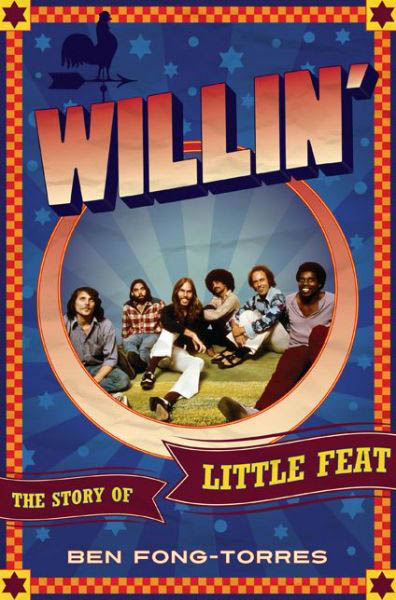People that lived through major historical events like the Kennedy assassination, man landing on the moon or 9/11, remember vividly where they were when they first heard of them. In the same way, I vividly remember the first time I heard Little Feat’s “Waiting for Columbus.”
It was in my friend John Kelley’s apartment in Rochester. John and I often battled over the turntable, but he won the lion’s share of the battle’s because it was his place. After months of listening to Grateful Dead bootlegs, Richard Thompson albums and the occasional Utopia album I slipped in, John told me he had discovered a band that sounded “like a tight version of the Grateful Dead.”
What I heard, in simplest terms, was love at first listen and my love for “Waiting for Columbus” has not waned a bit since. In fact, I listened to album when I completed my first half marathon earlier this year.
While I was never able to see the band with their iconic slide playing de facto leader Lowell George, I was able to experience other phases of the band, with Craig Fuller, Shaun Murphy and the late Richie Hayward, all of which are chronicled in Ben Fong-Torres’ “Willin’: The Story of Little Feat.”
I could think of no writer better suited than Fong-Torres to write this story, and he clearly took the task seriously and did an unfathomable amount of research.
Fong-Torres frames the story around the life of Lowell George, whose long shadow over the band impacted every facet of the band even though his tenure in the band was shorter than Shaun Murphy’s (Murphy was in the band from 1993-2009, George from 1969-1979).
In the book George is portrayed as a somewhat confusing figure, at times, he is the lovable big guy with the little wide feet, and other times he is the bi-polar, womanizing, drug using, control freak. In spite of his failings, one is not necessarily left with a negative image of the man, if anything, there is a terrible sense of loss when he dies because he never received the massive acclaim he deserved in his lifetime.
As for my beloved “Waiting for Columbus,” Fong-Torres paints the ultimate picture of a band that had already developed into factions by the time they made the historic album. When you read about the personal tensions, it makes sense why the music was played with such finesse and intensity.
Within two years after the album was released, Little Feat was a mess, and while semi-officially split when George was pursuing a solo career, it wasn’t until George’s death that it seemed like it was all over.
Fong-Torres does an excellent job capturing each of the band member’s reaction to George’s death, but perhaps the most powerful story he recounts was when former bassist Roy Estrada hangs up on him when he asks Estrada if he thought drugs had anything to do with George’s death. (Estrada was interviewed from prison where he is serving a 25-year sentence).
The bulk of the book focuses on the Lowell George era; Fong-Torres touches on the Craig Fuller era and the Shaun Murphy era, and if there is one failing of the book it’s the dismissive treatment of Murphy, who was an important part of the band’s history.
Overall, this is a great read and if you are a fan of the band this book is a must-own. It’s a great chronicling of a great band by a great author.





